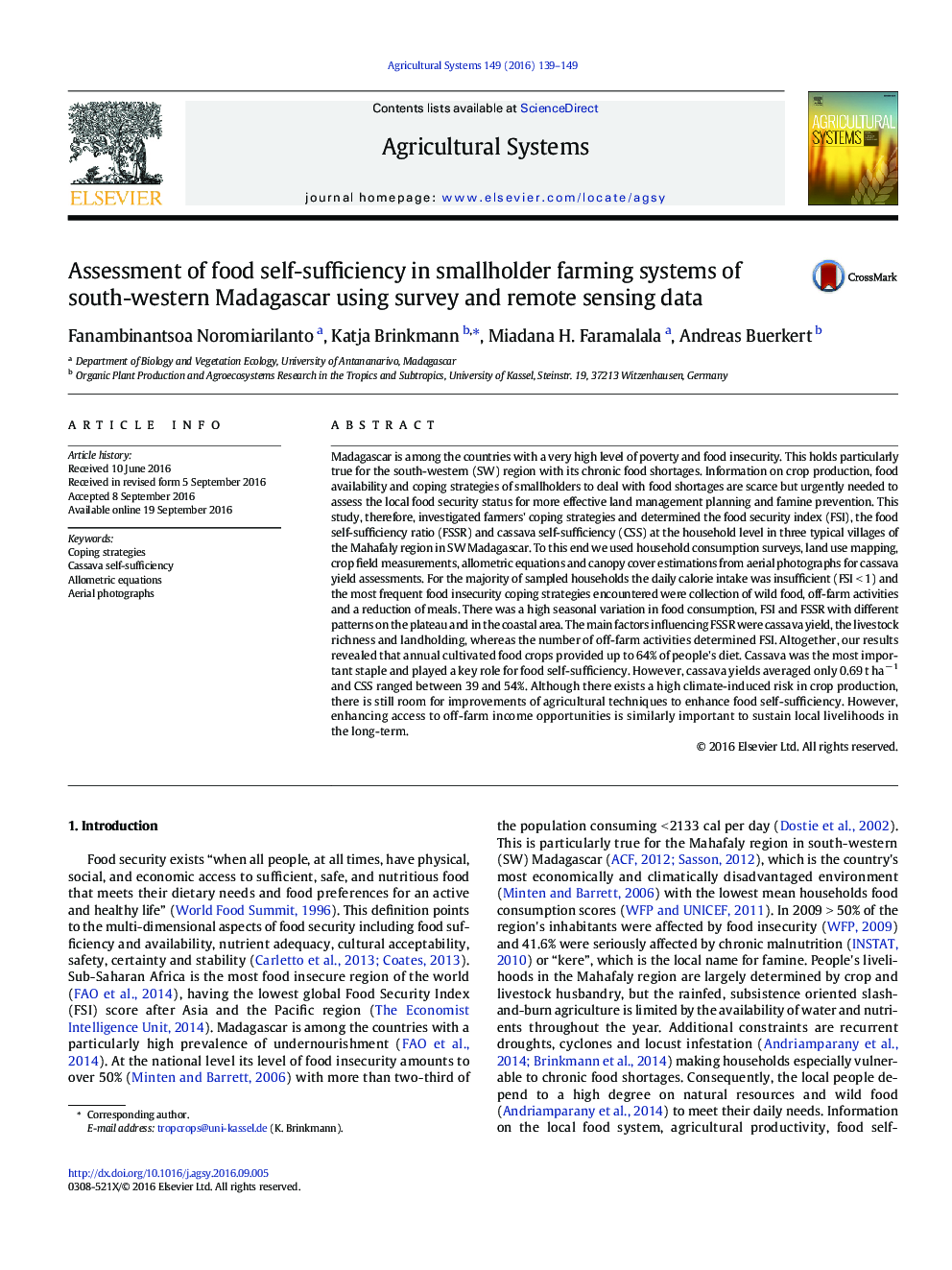| کد مقاله | کد نشریه | سال انتشار | مقاله انگلیسی | نسخه تمام متن |
|---|---|---|---|---|
| 6368255 | 1623221 | 2016 | 11 صفحه PDF | دانلود رایگان |
عنوان انگلیسی مقاله ISI
Assessment of food self-sufficiency in smallholder farming systems of south-western Madagascar using survey and remote sensing data
ترجمه فارسی عنوان
ارزیابی خودکارآمدی غذا در سیستم های کشاورزی مالداری جنوب غربی ماداگاسکار با استفاده از داده های سنجش از دور و سنجش
دانلود مقاله + سفارش ترجمه
دانلود مقاله ISI انگلیسی
رایگان برای ایرانیان
کلمات کلیدی
استراتژی های مقابله، خودکارآزمایی کاساوا، معادلات آلومتریک، عکسهای هوایی،
موضوعات مرتبط
علوم زیستی و بیوفناوری
علوم کشاورزی و بیولوژیک
علوم کشاورزی و بیولوژیک (عمومی)
چکیده انگلیسی
Madagascar is among the countries with a very high level of poverty and food insecurity. This holds particularly true for the south-western (SW) region with its chronic food shortages. Information on crop production, food availability and coping strategies of smallholders to deal with food shortages are scarce but urgently needed to assess the local food security status for more effective land management planning and famine prevention. This study, therefore, investigated farmers' coping strategies and determined the food security index (FSI), the food self-sufficiency ratio (FSSR) and cassava self-sufficiency (CSS) at the household level in three typical villages of the Mahafaly region in SW Madagascar. To this end we used household consumption surveys, land use mapping, crop field measurements, allometric equations and canopy cover estimations from aerial photographs for cassava yield assessments. For the majority of sampled households the daily calorie intake was insufficient (FSI < 1) and the most frequent food insecurity coping strategies encountered were collection of wild food, off-farm activities and a reduction of meals. There was a high seasonal variation in food consumption, FSI and FSSR with different patterns on the plateau and in the coastal area. The main factors influencing FSSR were cassava yield, the livestock richness and landholding, whereas the number of off-farm activities determined FSI. Altogether, our results revealed that annual cultivated food crops provided up to 64% of people's diet. Cassava was the most important staple and played a key role for food self-sufficiency. However, cassava yields averaged only 0.69 t haâ 1 and CSS ranged between 39 and 54%. Although there exists a high climate-induced risk in crop production, there is still room for improvements of agricultural techniques to enhance food self-sufficiency. However, enhancing access to off-farm income opportunities is similarly important to sustain local livelihoods in the long-term.
ناشر
Database: Elsevier - ScienceDirect (ساینس دایرکت)
Journal: Agricultural Systems - Volume 149, November 2016, Pages 139-149
Journal: Agricultural Systems - Volume 149, November 2016, Pages 139-149
نویسندگان
Fanambinantsoa Noromiarilanto, Katja Brinkmann, Miadana H. Faramalala, Andreas Buerkert,
